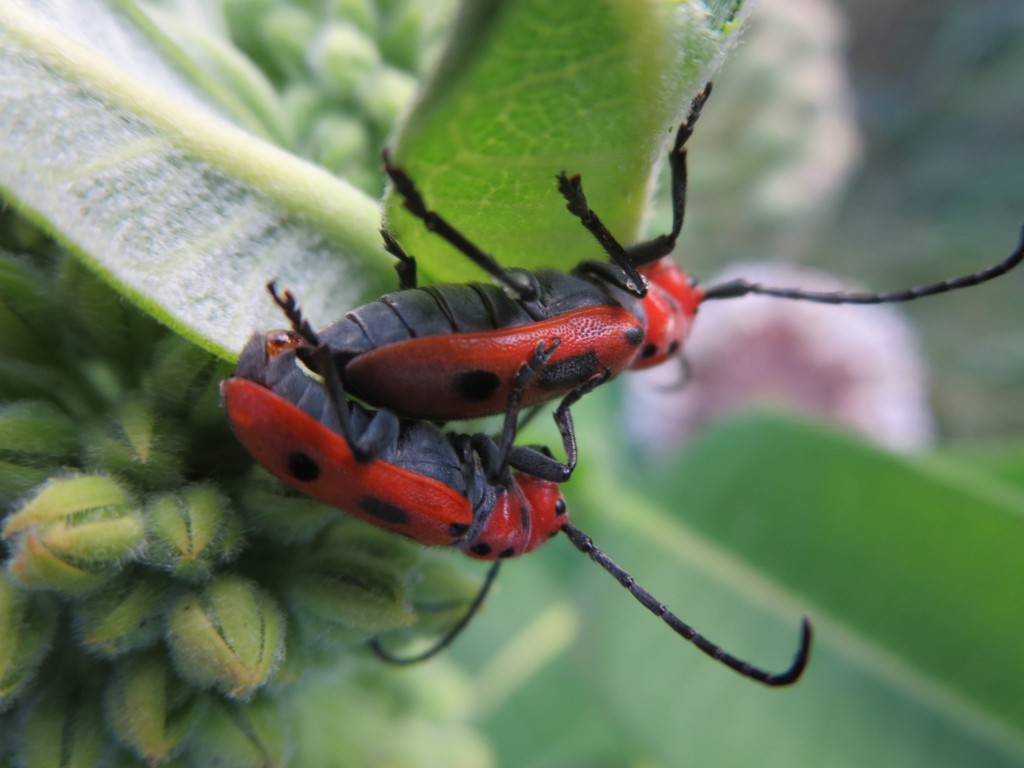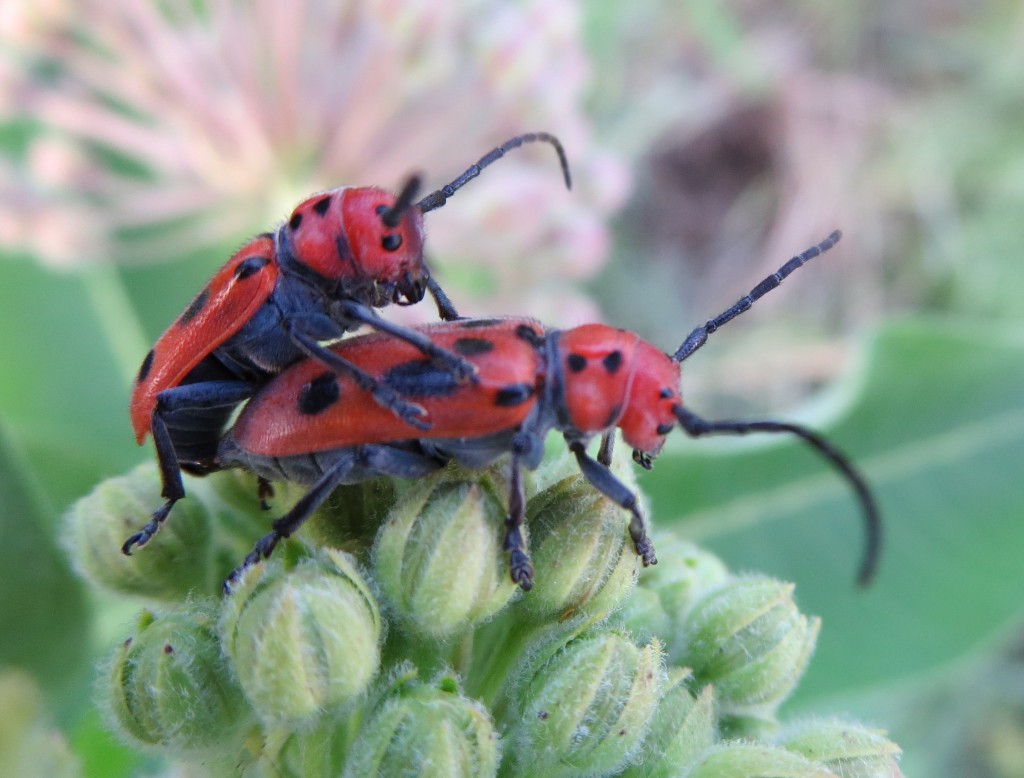These beetles must spend a lot of time mating. Yesterday was only the second time I’ve ever seen them, and both times, every beetle in sight was so engaged. Dozens of them. On both occasions, they were on patches of Common Milkweed. I was taking a walk when I saw them yesterday, hoping to spot Monarch caterpillars on the milkweed, to report to the website Journey North. Was disappointed to find no Monarchs, but enjoyed seeing the lovely Red Milkweed Beetles instead. They’re in the family of longhorn beetles, Cyrambycidae — notice the long antennae. Not to be confused with the much more common Milkweed Bugs, which are also red and black, but are not even beetles. Milkweed Bugs are in the order of true bugs, Hemiptera.
It’s not a coincidence that Red Milkweed Beetles, Milkweed Bugs, and Monarchs all are red or orange — “warning” colors to birds and other predators. The Monarchs and Red Milkweed Beetles and Milkweed Bugs are all toxic to predators because of toxic chemicals in the milkweed they eat.
Whenever I see milkweed, I look for monarchs. These celebrated butterflies are declining because milkweed is declining. The over-spraying of herbicides on genetically modified crops in the Midwest is a major reason for the demise of milkweed. Check out this excellent article from Slate. Monarchs need our help. Plant milkweed! The beetles will enjoy it too!

In this picture, you can see what I think is the spermatophore coming out of the male’s body and being transferred to the female’s body. It looks like an orange sphere. Photo by Sally Kneidel






